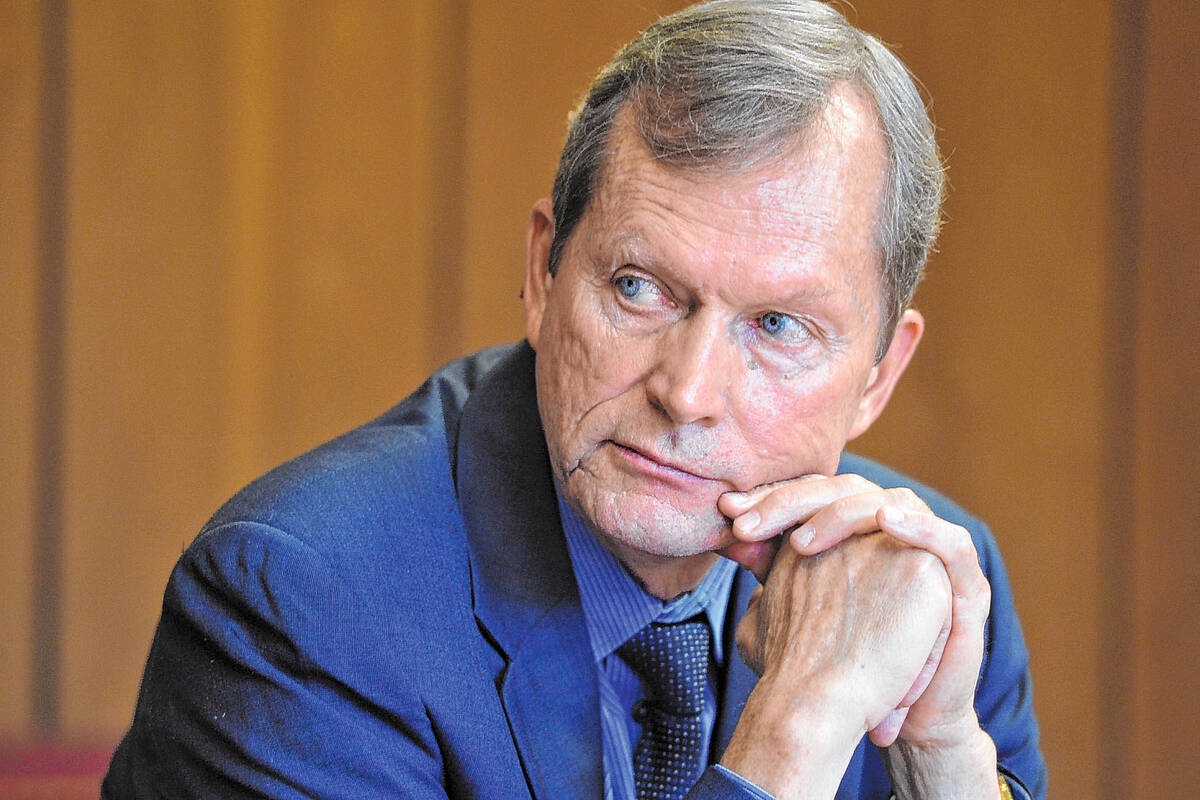5 Las Vegas sites and the people they’re named for

Across the Las Vegas valley, many parks, trails and roadways are named for Nevadans. Some of them came to Southern Nevada before Las Vegas was founded, and at least one is still practicing law in town.
Bruce Woodbury Beltway
The highway circumventing Henderson, Las Vegas and North Las Vegas is often referred to as the 215 Beltway. It’s proper title, the Bruce Woodbury Beltway, is named for the longest serving Clark County commissioner who held office for 28 years.
“Perhaps the thing I’m most proud of,” Woodbury, now 78, said, “I left with a good reputation, I think, for integrity, honesty, and putting the interest of the people first.”
Woodbury said he championed for transportation, flood control and helped pass the first clean air plan for the county.
These days, he practices probate and personal injury law and spends his free time trying to find a beach house in California big enough to celebrate the summer with his wife, Rose, and their seven children, 25 grandchildren and 10 great grandchildren.
He did not encourage his children to go into politics, but his son, Rod Woodbury, was elected the mayor of Boulder City, and his daughter, Melissa Woodbury, served as a state legislator for 10 years before a failed attempt at the Henderson City Council last year.
“It’s very humbling every time I drive by and see one of those signs,” Bruce Woodbury said of the highway. “I still get a little bit surprised because I’m not expecting it. I think to myself, ‘Gosh, I hope I somehow deserve that.’”
Charlie Frias Park
At 4801 S. Decatur Blvd., the Charlie Frias Park was named after the cab and limousine company owner of the 1950s and ’60s. The park opened in 2012.
Frias moved to Las Vegas after World War II and worked as a cab driver.
“He was a classic success story and ended up owning the cab company he drove for,” UNLV Historian Michael Green said.
Lorenzi Park
Like Frias, David Lorenzi was living for the locals. The French immigrant acquired land northwest of where Las Vegas existed in the 1920s, and he dug until he found water.
Lorenzi turned the spring into a resort with dining, dancing and tunnels to hide drinkers during prohibition. The resort was later named Twin Lakes Lodge, and the park now sits on his land at 3333 W. Washington Ave.
“Lorenzi wasn’t building a hotel casino; mostly locals took advantage,” Green said.
C.C. Ronnow Elementary School
Although the Mormon Fort was built in Las Vegas in 1855 on what’s now East Washington Avenue, Green said there were very few Mormons when C.C. Ronnow moved to the valley in 1905 from Panaca. He and Ed Clark, the namesake of Clark High School, were lifelong friends who helped Clark County separate from Lincoln County and become its own in 1909.
A webpage for his elementary school’s namesake details his family’s history and Ronnow’s work constructing the Clark County Courthouse on Third Street and other structures in Las Vegas, including a store on Main Street and a temple.
Pittman Wash
Although there were two notable Pittmans in Nevada’s history, the wash is not named for Gov. Vail Pittman, Green said.
It’s named for his brother, Key Pittman, who won more elections in the U.S. Senate than any other senator in Nevada history. He served from 1913 to 1940. At one point during his tenure, he served as third in command of the federal government, or president pro tempore, under Franklin D. Roosevelt and John Garner.
“Meaning if both Franklin Delano Roosevelt and Vice President John Garner had been killed or incapacitated, under the Constitution, Pittman would have been president. This is a bit scary because he also suffered from alcoholism, and there are plenty of stories about his behavior and misbehavior.”
Pittman moved to Nevada during the gold rush and was remembered as an advocate for Nevada’s silver mines.
“He was responsible for legislation for the federal government to buy silver that Nevada produced,” Green said.
Contact Sabrina Schnur at sschnur@reviewjournal.com or 702-383-0278. Follow @sabrina_schnur on Twitter.